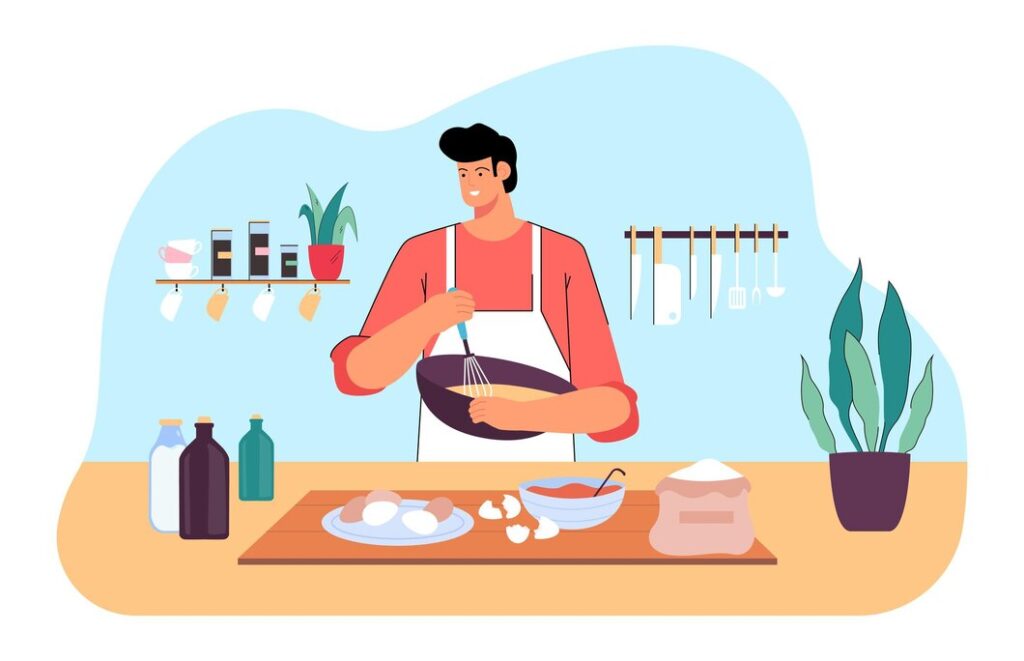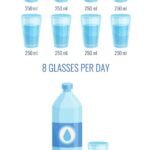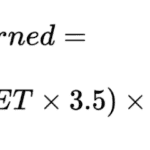Neapolitan Pizza Dough Calculator
Find Pizza Cooking Temperature, Baking Time, Calories
Making pizza at home is a delightful experience that allows you to customize every aspect of your pie, from the dough thickness to the number of toppings. However, getting the right proportions of ingredients and baking time can be tricky. This article provides a comprehensive guide to perfecting your pizza with a pizza calculator, helping you determine the ideal amount of dough, sauce, cheese, and toppings for your desired pizza size and style.
Perfect Pizza Calculator

UNDERSTANDING lean body meaning
Understanding Pizza Portions, Ingredients, Oven Temperatures
Whether you’re making your first homemade pizza or you’re a seasoned pizza lover looking for accuracy, this guide will help you plan better. From calculating exact dough and toppings to knowing baking times, temperatures, and serving sizes—every question you might have about making the perfect pizza is answered here. If you want to learn more about Pizza as a topic see this

pizza dough calculator
Mastering Pizza Dough: Get the Perfect Crust Every Time
Making pizza dough from scratch can seem intimidating, but with the right measurements and technique, you can create a perfectly chewy or crispy crust. Whether you prefer a Neapolitan pizza dough or a thicker pan pizza dough, we’ve got you covered with everything you need to know about dough ratios and weights.
🧪 Pizza Dough Calculator: Say Goodbye to Guesswork
Using a pizza dough calculator is a game changer for home chefs. By inputting your desired pizza size, crust thickness, and style, you can get the most accurate dough measurements—ensuring that your crust is neither too thick nor too thin.
What the Calculator Does for You:
- Select your pizza size (from 10″ to 16″)
- Choose the crust thickness (thin, medium, or thick)
- Pick your pizza style (Neapolitan, NY-style, pan, etc.)
- Get exact ingredient measurements for flour, water, yeast, salt, and oil (Need a Measurements converter?)
With these details, you can scale the dough to make multiple pizzas for parties or get precise measurements for a single pie.
Example: Pizza Dough Weight Calculator Chart
Here’s an example of the dough weights and ingredients for a thin crust pizza:
| Pizza Size | Dough Weight | Flour | Water | Salt | Yeast | Oil |
|---|---|---|---|---|---|---|
| 10-inch | 250g | 150g | 95g | 3g | 1g | 4g |
| 12-inch | 300g | 180g | 110g | 3.5g | 1g | 5g |
| 14-inch | 380g | 230g | 140g | 4g | 1.2g | 6g |
| 16-inch | 450g | 270g | 165g | 5g | 1.5g | 7g |
These measurements can be adjusted according to your preferences for a slightly chewier or thinner crust. You can use this to convert these grams to cups
🍕 Neapolitan Pizza Dough: The Traditional Italian Style
If you’re after an authentic, Neapolitan pizza dough, it’s all about the flour, water, salt, and a tiny pinch of yeast. Unlike other pizza dough recipes, Neapolitan dough does not use oil—it’s all about simplicity and technique.
Here’s what you need for Neapolitan dough:
- Flour: 100% (high-protein flour is preferred)
- Water: 65-70% of the flour’s weight
- Salt: 2-3% of the flour’s weight
- Yeast: A tiny pinch (0.1-0.2%)
- Oil: None
For the best results, allow the dough to ferment in the fridge for 48 hours. This long fermentation process gives the dough its rich flavor and chewy texture that’s characteristic of a classic Neapolitan pizza.
Frequently Asked Questions About Pizza
UNDERSTANDING lean body meaning
How Many Slices in a 12 Inch Pizza vs. 16 Inch Pizza?
Whether you’re cooking at home or ordering in, one of the first questions that pops up is how many slices will a pizza give me? The answer depends on the size and style of the pizza—but understanding the basics can help you plan meals better, avoid waste, and feed everyone happily.
🍕 Standard Pizza Sizes and Slice Counts
Here’s a quick guide to standard pizza sizes and their typical slice counts:
| Pizza Size (Diameter) | Average Number of Slices | Feeds |
|---|---|---|
| 8 inch (Personal) | 4 | 1 person |
| 10 inch (Small) | 6 | 1–2 people |
| 12 inch (Medium) | 8 | 2–3 people |
| 14 inch (Large) | 10 | 3–4 people |
| 16 inch (Extra-Large) | 12 | 4–5 people |
| 18 inch (Party Size) | 14–16 | 5–6+ people |
The number of slices can also vary based on how the pizza is cut—traditional triangle slices vs. square-cut (“party cut”)—and how thick or thin your crust is. Thin-crust pizzas often have more slices with smaller surface area, while thick crust pizzas might be cut into fewer, more filling slices.
🧑🍳 Why Slice Count Matters When Cooking at Home
When you’re making homemade pizza, slice count affects:
- Dough preparation: A 16 inch pizza needs nearly twice the dough of a 10 inch pizza
- Toppings quantity: More slices = more surface area to top
- Nutrition estimation: You’ll need to divide total calories by slices to calculate per serving
So, if you’re tracking calories or planning servings, always base your nutrition estimates on how many slices you plan to cut your pizza into.
👉 Quick Tip: A 16 inch pizza is not just slightly bigger than a 12 inch—it has 77% more area, which means it can feed more people or offer larger servings.
🍕 How Many People Does a 16 Inch Pizza Feed?
A 16 inch pizza typically serves 4 to 5 adults if everyone eats two or three slices. For kids or when paired with sides, it may feed 6 or more.
Planning for a gathering?
Here’s a general guideline:
| Group Size | Suggested Number of 16″ Pizzas |
|---|---|
| 4 people | 1 pizza |
| 8 people | 2 pizzas |
| 12 people | 3 pizzas |
| 20 people | 4–5 pizzas |
| 30 people | 6–8 pizzas |
💡 If you’re serving pizza as part of a meal with salads, drinks, or dessert, you can often reduce the number by 10–20%.
From Pizza Dough to Perfection – Unlock Expert Recipes with Recipians!
Looking to elevate your pizza game? With Recipians, you can unlock expert recipes tailored to your preferences, from the perfect pizza dough to mouthwatering toppings. Whether you’re a beginner or a pro, Recipians helps you master every step of the pizza-making process. Get personalized tips on dough ratios, cooking times, and the best baking temperatures. Plus, discover new recipe ideas that perfectly match your taste, dietary needs, and available ingredients. With Recipians, pizza night is always a success – start creating your perfect pizza today!
HOMECOOKED PEPPERONI VS DOMINOS PIZZA
Pizza Nutrition: What’s in Your Slice?
🍽️ Pepperoni Pizza: A Breakdown of Calories
A typical slice of pepperoni pizza (from a standard 12-inch pizza) can contain anywhere between 280 to 350 calories, depending on the thickness of the crust and the amount of cheese and pepperoni. The calorie content is heavily influenced by the dough, sauce, and cheese choices.
- Calories from Fat: Around 120-150 calories
- Protein: 10-12 grams per slice
- Carbohydrates: 30-35 grams per slice
- Fat: 12-16 grams per slice (with about 5 grams being saturated fat)
The calories from fat can quickly add up, which is why it’s important to be mindful of how many slices you consume if you’re watching your calorie intake.
🍕 Nutritional Components: What Else Is in Your Pizza?
Here’s an overview of the other nutrients in a standard slice of pepperoni pizza:
| Nutrient | Per Slice (12-inch Pizza) |
|---|---|
| Calories | 290-350 kcal |
| Carbs | 30-35 g |
| Fat | 12-16 g |
| Saturated Fat | 5-7 g |
| Cholesterol | 20-30 mg |
| Protein | 10-12 g |
| Sodium | 600-800 mg |
| Fiber | 1-3 g |
| Calcium | 60-100 mg |
| Iron | 1-2 mg |
While pepperoni pizza offers a decent amount of protein, it is high in sodium and saturated fat, which is something to keep in mind if you have dietary restrictions related to heart health, blood pressure, or weight management.
🧑🍳 How to Lower Calories & Make Your Pepperoni Pizza Healthier
Making healthier choices in your pizza preparation can reduce excess calories and sodium. Here are a few modifications:
- Use less cheese: Cutting back on cheese will reduce both fat and calorie content.
- Opt for leaner toppings: Instead of regular pepperoni, try turkey pepperoni or other lower-fat protein options.
- Choose a thin crust: A thin crust uses less dough, resulting in fewer carbs and calories.
- Add more vegetables: Pile on veggies like peppers, onions, mushrooms, or spinach to add fiber and reduce calorie density.
By making simple swaps, you can still enjoy a delicious slice of pizza without overloading on calories and fat.
🍕 Domino’s Nutrition Facts: How Does Your Favorite Pizza Compare?
If you’re thinking about ordering from Domino’s or another pizza chain, you might be wondering about the nutritional breakdown of the pizza you’re craving. Here’s a look at some common Domino’s pizza nutrition facts, particularly focusing on their most popular options. Worried about your Sodium Intake?
🍽️ Nutrition in Domino’s Pizzas: A Snapshot
Here’s the nutrition information for a slice of Domino’s large pepperoni pizza (depending on crust type):
| Nutrient | Per Slice (Large Pepperoni Pizza) |
|---|---|
| Calories | 300-350 kcal |
| Carbs | 32-38 g |
| Fat | 15-18 g |
| Saturated Fat | 6-8 g |
| Protein | 12-14 g |
| Sodium | 700-900 mg |
| Fiber | 2-3 g |
| Calcium | 120-150 mg |
| Iron | 1.5-2.5 mg |
While Domino’s pizzas are generally delicious, they do tend to be higher in sodium and calories, particularly when paired with sides like breadsticks or soda.
🍕 Calorie Breakdown for Domino’s Pizza: Regular vs. Thin Crust
Here’s a closer comparison of the calories in different crust types from Domino’s. (Find your macros – Calories, Fat, Carbs, Protein needed)
| Pizza Type | Calories per Slice (Large) |
|---|---|
| Hand-Tossed Crust | 300-350 kcal |
| Thin Crust | 230-280 kcal |
| Brooklyn Style Crust | 320-380 kcal |
| Gluten-Free Crust | 260-310 kcal |
🧑🍳 Make Domino’s Pizza Healthier
If you love Domino’s but want a healthier version, try these tips:
- Switch to thin crust: Lower the carb count and calories.
- Go for veggie toppings: Try mushrooms, onions, spinach, or peppers.
- Ask for less cheese: Reducing the cheese can help cut calories and fat.
- Order smaller sizes: Opt for a medium pizza rather than a large to reduce portion size.
By making these small changes, you can enjoy your pizza without derailing your health goals.
pizza time and temp
What Temperature & Time Should You Use?
The temperature and baking time play a huge role in the quality of your pizza. From achieving a crispy crust to perfectly melted cheese, knowing how hot to cook your pizza and how long to bake it can elevate your homemade pizza to professional levels.
🔥 What Temperature to Cook Pizza In Oven
The pizza baking temperature is crucial for getting the right crust and flavor. Here’s a breakdown of the optimal oven temperatures and baking times for different types of pizza:
| Pizza Style | Oven Temp (°C / °F) | Baking Time | Notes |
|---|---|---|---|
| Neapolitan | 450–500°C / 850–900°F | 60–90 sec | Requires a wood-fired oven for best results |
| NY Style | 290–315°C / 550–600°F | 6–8 min | Use a pizza stone for best results |
| Thin Crust | 230–250°C / 450–480°F | 8–10 min | Standard home oven temperature |
| Pan/Deep Dish | 200–220°C / 400–430°F | 12–15 min | Lower temp, longer baking time for thicker crusts |
🍕 The Ideal Time for Cooking Pizza
Pizza cooking time varies depending on the thickness of your crust and the type of pizza. Here are some tips:
- Neapolitan pizza: Bakes in 60-90 seconds at a high temperature in a wood-fired oven.
- NY-style pizza: Bakes in 6-8 minutes at a slightly lower temperature in a standard home oven.
- Thin crust pizza: Takes 8-10 minutes in a home oven at 450-480°F.
- Pan or deep-dish pizza: Needs 12-15 minutes at a lower temperature, around 400-430°F.
🧑🍳 Tips for Baking Pizza at Home:
- Preheat your oven: Always preheat your oven for 30-40 minutes for the best results. This ensures the pizza cooks evenly and crisply.
- Use a pizza stone or steel: These tools help retain heat and mimic a professional pizza oven, providing a crispy crust.
- Check the pizza regularly: Every oven is different. Make sure to keep an eye on your pizza to avoid burning or undercooking it.
- Experiment with the temperature: If you notice your pizza is cooking too fast on the outside and not enough on the inside, reduce the temperature slightly and bake a little longer.
⚖️ Achieving the Perfect Balance: Oven Temperature and Time
To avoid the common issue of undercooked pizza dough or overcooked toppings, maintaining the right oven temperature is essential. It’s also important to rotate the pizza halfway through the baking process to ensure even cooking.
🧯 Storing Pizza: How to Keep Leftovers Fresh
If you have leftover pizza, it’s important to store it properly to maintain its quality. Here’s what you should do:
Reheating tips: To bring back the crispiness, reheat pizza in the oven at 375°F for about 5-8 minutes, or use a pizza stone.
Storage temperature: Keep leftover pizza in the fridge at below 4°C (39°F).
pizza party calculator
Hosting? Here’s How Many Pizzas to Make for a Crowd
Planning to serve pizza at your next event or gathering? Whether you’re hosting a kids’ party, an office lunch, or a big game night, knowing how many pizzas to order or prepare can be a bit tricky. The last thing you want is to run out of pizza—or end up with too much left over.
Here’s a simple guide to help you calculate how many pizzas to make based on the number of guests and their appetites:
Pizza Estimates for Different Group Sizes
| Number of People | Light Eaters (1–2 Slices) | Hungry Crowd (3+ Slices) |
|---|---|---|
| 10 | 3 pizzas | 4–5 pizzas |
| 20 | 6 pizzas | 8 pizzas |
| 30 | 8 pizzas | 10+ pizzas |
Understanding Pizza Slices and Sizes
- Pizza size matters: A standard 12-inch pizza typically yields 8 slices, while a 16-inch pizza offers around 10 slices. Larger pizzas are a better choice when serving more guests, as they provide more slices per pizza.
- Consider appetites: Light eaters usually consume 1–2 slices, while those with a bigger appetite may go for 3 or more slices. If you’re serving a hungry crowd, you’ll want to have extra pizzas on hand to ensure no one goes home hungry.
- Adjust for dietary needs: If you’re catering to people with dietary restrictions, such as gluten-free, vegetarian, or vegan diets, you may want to order specialty pizzas, which may affect the overall count.
Conclusion
Creating the perfect pizza at home is both an art and a science, requiring attention to detail and experimentation. By understanding basic pizza calculations and utilizing tools like the Pizza Calculator, you can craft a pizza that suits your tastes and preferences. Whether you’re a fan of thin crust Neapolitan or hearty Chicago deep dish, these guidelines will help you achieve delicious results every time.
Experiment with different styles, ingredients, and techniques to discover your personal pizza-making style, and enjoy the satisfaction of making a homemade pizza that’s tailored to your liking. Happy pizza making!





